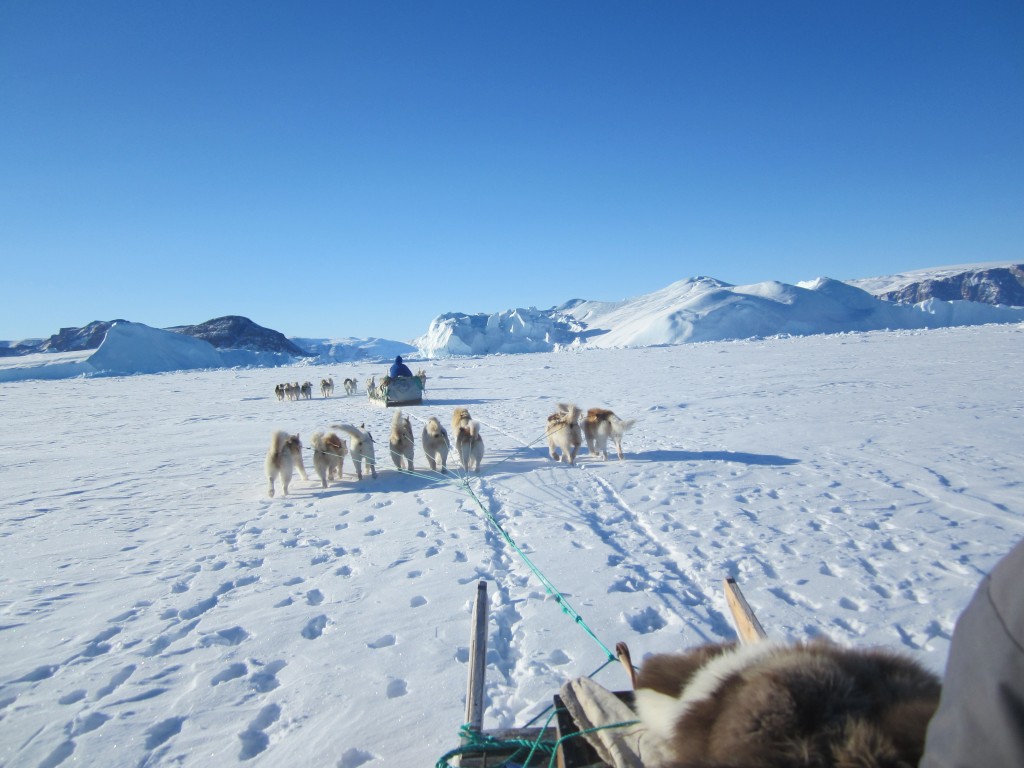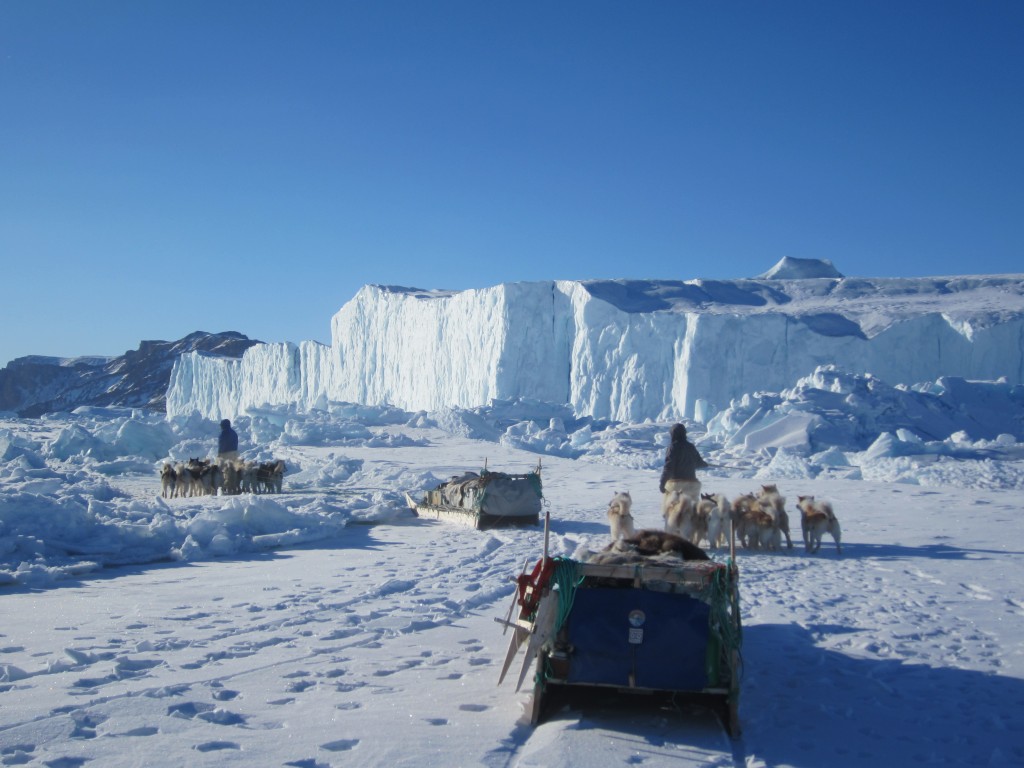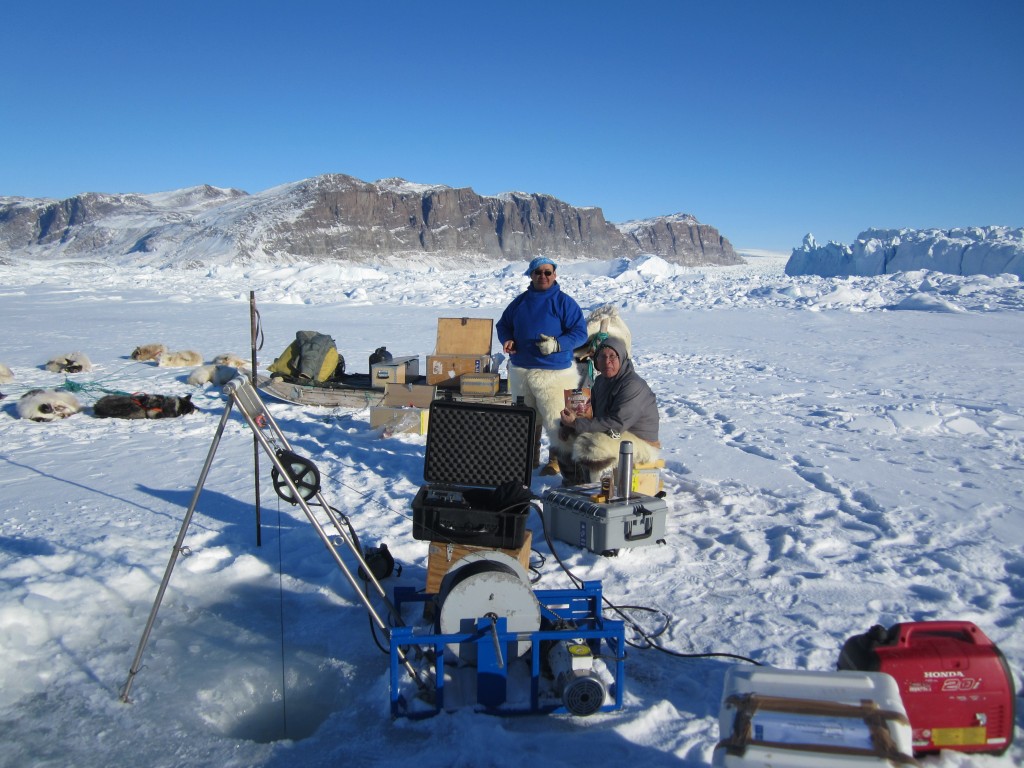EMsled blog no. 3
ICE-ARC PI Jeremy Wilkinson and Francois Guerraz from the British Antarctic Survey (BAS) are working with colleagues from the Danish Meteorological Institute (DMI) and the Greenland Climate Research Centre (GCRC) and local Inuit in North West Greenland. They’re developing an instrument that will eventually be given to hunters to put on their sleds and will measure sea-ice thickness. Between building and testing, they’re writing a blog so we can get updates on their progress as they go.
Day 3 – dog sled excursions
Sea ice are very much the highways of the north; indeed, one can travel on these highways with dogsleds and snowmobiles. Excursions may be hunting trips to remote regions or social visits to nearby villages. Furthermore, hunting on the sea ice contributes to the health, culture, and commercial income of a community. We saw in the last blog how we are developing equipment to place on these sleds to automatically measure the thickness of sea ice.
However the sea ice cycle in undergoing rapid change, it is forming later, melting earlier and is very much thinner that it use to be. Understanding the sea ice change means understanding the ocean. Steffen Olsen from DMI and Qaanaaq hunters Qaanaaq hunters Lars Jeremiassen and Rasmus Avike perform seasonal surveys (with dog teams) of the ocean properties within the ICE-ARC programme. They have just returned from an extended survey right up to the head of the fjord:

Moving to next location for an oceanographic measurement. Photo of taken of Rasmus Avike sled from Lars Jeremiassen‘s sled.Photo: S.Olsen DMI

Moving slowly through rough ice near the Tracy Glacier. Rasmus Avike team in front , Lars Jeremiassen’s team just behind. Photo S. Olsen.

Oceanographic survey via dog team. All set up and taking measurements. The system is in the water and moved up and down via by a winch (foreground). Qaanaaq hunters (Inuit from the local town) Lars Jeremiassen and Rasmus Avike are shown enjoying a well earned cup of coffee. The air temperature is a chilly -25C. Photo S. Olsen DMI


